To successfully bring Vietnamese agricultural products to the world market, it is necessary to grasp and properly implement agricultural agricultural product export procedures is extremely important. This process requires careful preparation of quality, documentation and logistics. This article Viot Minh Trang will provide detailed instructions on agricultural agricultural product export procedures, from necessary documents, specific procedures, to important notes and answers to frequently asked questions, helping Vietnamese businesses confidently conquer the global market.
Required Export Documents
The complete and accurate preparation of documents is the first foundation in agricultural agricultural product export procedures. These are basic and mandatory documents in all international trade transactions, especially with agricultural products.
International Sales Contract
The most important legal document, clearly defining the terms and conditions of transaction between the exporter and the importer regarding goods, quantity, quality, price, delivery terms (Incoterms), payment methods, etc.
Commercial Invoice
A document used for requesting payment, providing detailed information about the shipment including seller/buyer names, product description, quantity, unit price, and total value. This is a key document for customs declaration.
Packing List
Describes in detail the packaging method, quantity and type of packages, net/gross weight, and dimensions of each package. The information must match that on the Commercial Invoice.
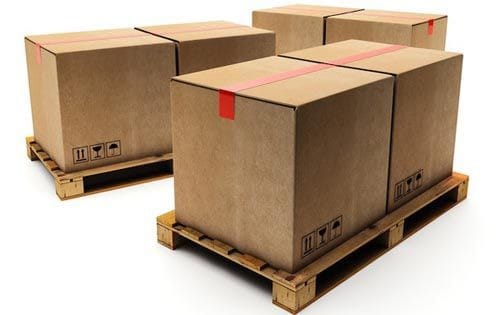
Packing List
Bill of Lading (B/L) or Air Waybill (AWB)
These are transport documents issued by the shipping line or airline, confirming that the goods have been received for shipment. They also serve as proof of the transportation contract.
Customs Declaration
A mandatory document that must be submitted to the Vietnamese customs authority. It is filed electronically via the VNACCS/VCIS system and includes detailed information about the shipment and the exporting company.
Certificate of Origin (C/O)
This document certifies that the goods originate from Vietnam. It allows the importer to benefit from preferential tariff rates under Free Trade Agreements (FTAs) in which Vietnam is a member.
Phytosanitary Certificate (PC) and Health Certificate (HC)
- PC: Issued by the Plant Protection Department for plant-based products, confirming the goods are free from harmful pests and diseases.
- HC: Issued by the Department of Food Safety or the Department of Animal Health for animal or processed products, confirming food safety and hygiene compliance.
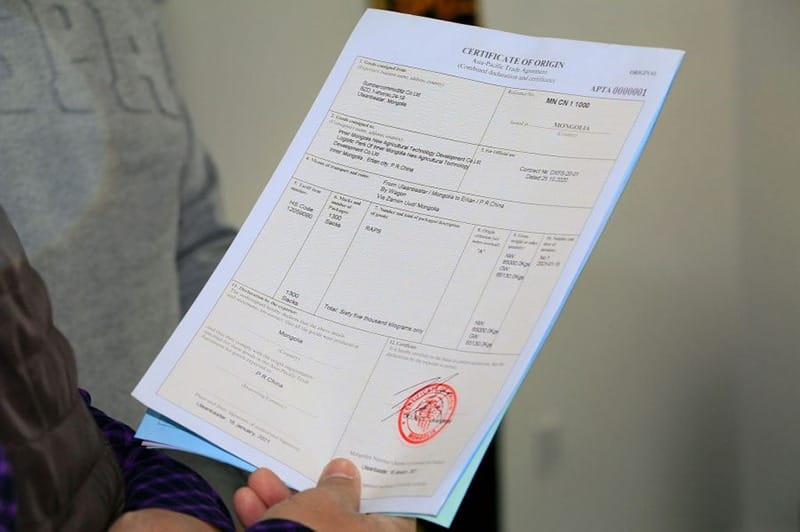
Certificate of Origin (C/O)
International Quality Certifications (GlobalGAP, Organic, HACCP, ISO 22000, Halal, Kosher, BRC, etc.)
While not always mandatory, these certifications offer a significant advantage. They help products enter high-end markets and demonstrate that the agricultural exports meet international standards.
See now:
Vietnam’s agricultural export situation 2025–2026: New Opportunities and Challenges
Detailed procedures for agricultural product export procedures
Perform agricultural product export procedures is a series of sequential steps, requiring precision and coordination.
Step 1: Product Preparation and Quality Inspection
Before starting the agricultural agricultural product export procedures, goods need to be prepared:
- Production and Harvesting: Ensure that cultivation and harvesting processes follow standards such as VietGAP or GlobalGAP (if applicable), so the products meet quality and safety requirements from the outset.
- Preliminary Processing and Treatment: Conduct initial steps such as cleaning, sorting, and processing (drying, freezing, etc.) in accordance with proper hygiene standards and procedures.
- Internal Quality Control: Take samples to test for key quality indicators, chemical residues (pesticides, antibiotics, etc.), and microbial safety to ensure compliance with the importing country’s requirements.
- Packaging and Labeling: Products must be properly packaged (e.g., in cartons, pallets, shrink wrap) to ensure protection during transportation. Labels must include all necessary information as required by both Vietnam and the importing country — including product name, origin, weight, expiration date, manufacturer/packer information, and the planting/packing facility code (if required).
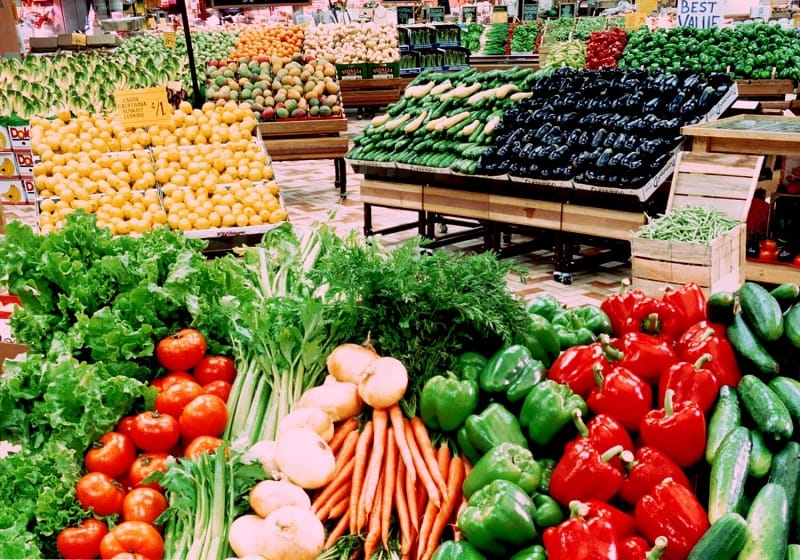
Product Preparation and Quality Inspection
Step 2: Apply for Industry-Specific Permits/Certificates (If Required)
Depending on the type of agricultural product and the target market, businesses may need to obtain specific permits and certifications:
- Registering Plantation/Growing Area and Packing Facility Codes: This is especially important for the official export of fresh fruits to China and some other markets. Businesses must register with the Plant Protection Department to obtain these codes, which must be approved by the importing country.
- Applying for a Phytosanitary Certificate (PC): Submit the application (including the registration form, contract, packing list, etc.) to the Plant Protection Department or Regional Plant Quarantine Sub-Department. The authority will verify the documents, inspect the shipment (if required), and issue the PC if the shipment meets the standards.
- Applying for a Health Certificate (HC): For seafood or processed food products, businesses must submit documents to the Department of Food Safety (Ministry of Health) or the Department of Animal Health (Ministry of Agriculture and Rural Development). The authority will inspect, take samples, and issue the HC if requirements are met.
- Other Special Permits: For example, products derived from wildlife require a CITES permit (Convention on International Trade in Endangered Species of Wild Fauna and Flora).
Step 3: Prepare a Complete Set of Export Documents
Gather all necessary documents listed in the section “Required Export Documents,” including: Sales Contract, Commercial Invoice, Packing List, Certificate of Origin (C/O), Bill of Lading (B/L) or Air Waybill (AWB), Phytosanitary Certificate (PC), Health Certificate (HC, if applicable), and other quality certifications.
Ensure all information across documents is accurate, consistent, and error-free — this is essential for customs declaration.
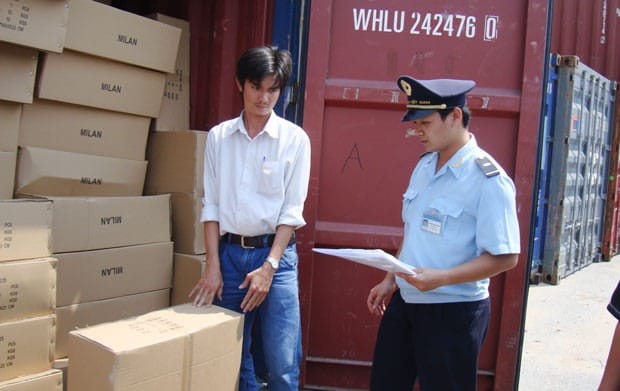
Prepare a Complete Set of Export Documents
Step 4: Customs Declaration
This is one of the most critical steps in the agricultural export procedure:
- Register for an Electronic Customs Account: If not already registered, the business must create an account on the VNACCS/VCIS electronic customs clearance system managed by the General Department of Customs.
- Submit the Electronic Customs Declaration: Use customs declaration software to enter detailed shipment information, including product name, HS code, quantity, value, origin, departure/destination port, company information, consignee details, etc.
- Transmit the Declaration and Receive Risk Channel Assignment: Once the
- Green Channel: No need for document or physical inspection. The declaration can be printed and the goods released from customs.
- Yellow Channel: Required to present physical documents for verification.
- Red Channel: Required to present both physical documents and goods for inspection (either full or random check).
Note: The channel assigned depends on factors like business risk level, product type, and customs compliance history.
Step 5: Customs Clearance at Port/Border Gate
After the customs declaration is classified into a clearance channel, the business or customs broker must perform the following steps at the port or border checkpoint:
- Present Documentation: Submit the printed customs declaration and original/copy documents (depending on the assigned clearance channel) to customs officers at the checkpoint.
- Physical Inspection of Goods (if applicable): For Red Channel declarations, customs will inspect the goods either at the storage yard or designated inspection site.
- Pay Export Taxes (if applicable): Most agricultural exports are tax-exempt. However, some specific products may be subject to export tax, and businesses must pay accordingly.
- Receive Customs Clearance Decision: Once all procedures are completed and requirements met, customs will issue the official clearance for the shipment.
Step 6: Shipping the Goods
After customs clearance, the business proceeds with shipping:
- Booking with Carrier: Reserve space with a shipping line or airline, selecting the most suitable method and carrier.
- Delivery Procedures: Deliver full containers or less-than-container-load shipments to the port or airport.
- Track Shipment Progress: Monitor the shipment to ensure it arrives on schedule and in good condition.
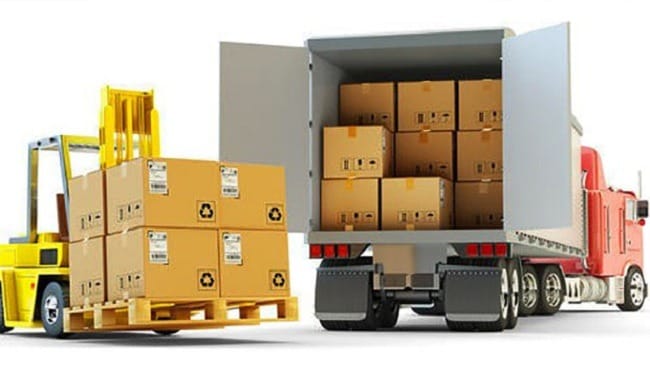
Shipping the Goods
Step 7: Payment and Completion of Documentation
- Execute Payment: Carry out the payment process according to the terms agreed upon in the sales contract (e.g., L/C, T/T, etc.).
- Document Archiving: Organize
See now:
Export Packaging Specifications – A Key Factor for Success in the Global Market
Important Notes When Exporting Agricultural Products
To ensure a smooth export process, businesses should keep the following in mind:
- Thoroughly Research the Import Market: Understand the regulations, standards, and consumer preferences of each target market to meet requirements precisely.
- Invest in Quality and Safety at the Farming Stage: Ensure product quality from the source by applying standards such as VietGAP or GlobalGAP.
- Prepare Accurate and Complete Documentation: Avoid errors that could cause delays or incur additional costs during customs clearance.
- Choose Reliable Logistics and Shipping Partners: Ensure goods are handled properly, transported safely, and delivered on schedule.
- Leverage Free Trade Agreements (FTAs): Utilize tariff preferences through Certificates of Origin (C/O) to enhance price competitiveness.
- Stay Updated on Regulations: Regularly monitor updates from authorities and industry associations to make timely adjustments.
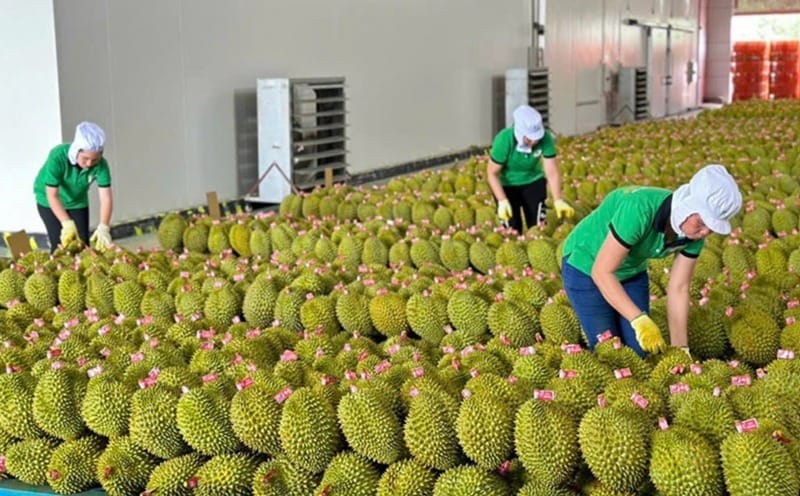
Important notes when exporting agricultural products
Frequently Asked Questions (FAQ) About Agricultural Export Procedures
Answers to common questions regarding the export of agricultural products:
How long does it take to complete agricultural export procedures?
The timeline depends on the type of product, target market, document preparation, and mode of transport. On average, it can take from a few days to several weeks to complete customs clearance.
Which agricultural products require plantation/packing facility codes?
Mainly fresh fruits for official export to China and certain other markets. It’s essential to check the specific requirements for each product and destination.
What costs are involved in agricultural exports?
Costs typically include production, processing, quality inspection, packaging, transportation, customs fees, insurance, and certification/documentation fees.
Is a GlobalGAP or Organic certificate required for agricultural exports?
Not always mandatory, but it is a significant competitive advantage. These certifications help products access premium markets and achieve higher value.
What happens if goods are returned?
The business must carry out re-import procedures, declare with customs, and handle the goods in accordance with relevant regulations.
See now:
Overview of Vietnam’s main export items
VIOT Vietnam – Your Trusted Partner in Agricultural Exports
To simplify and optimize agricultural export procedures, Viot Minh Trang is your reliable partner. We provide clean, high-quality agricultural products that meet the most stringent export requirements.
With over 3,000 hectares of raw material area and a processing facility certified by international standards (ISO 22000, FDA, GMP, Halal), Viot Minh Trang guarantees export-ready products with complete legal documentation.
We support our partners with certifications and information to shorten lead times and streamline the export process effectively.
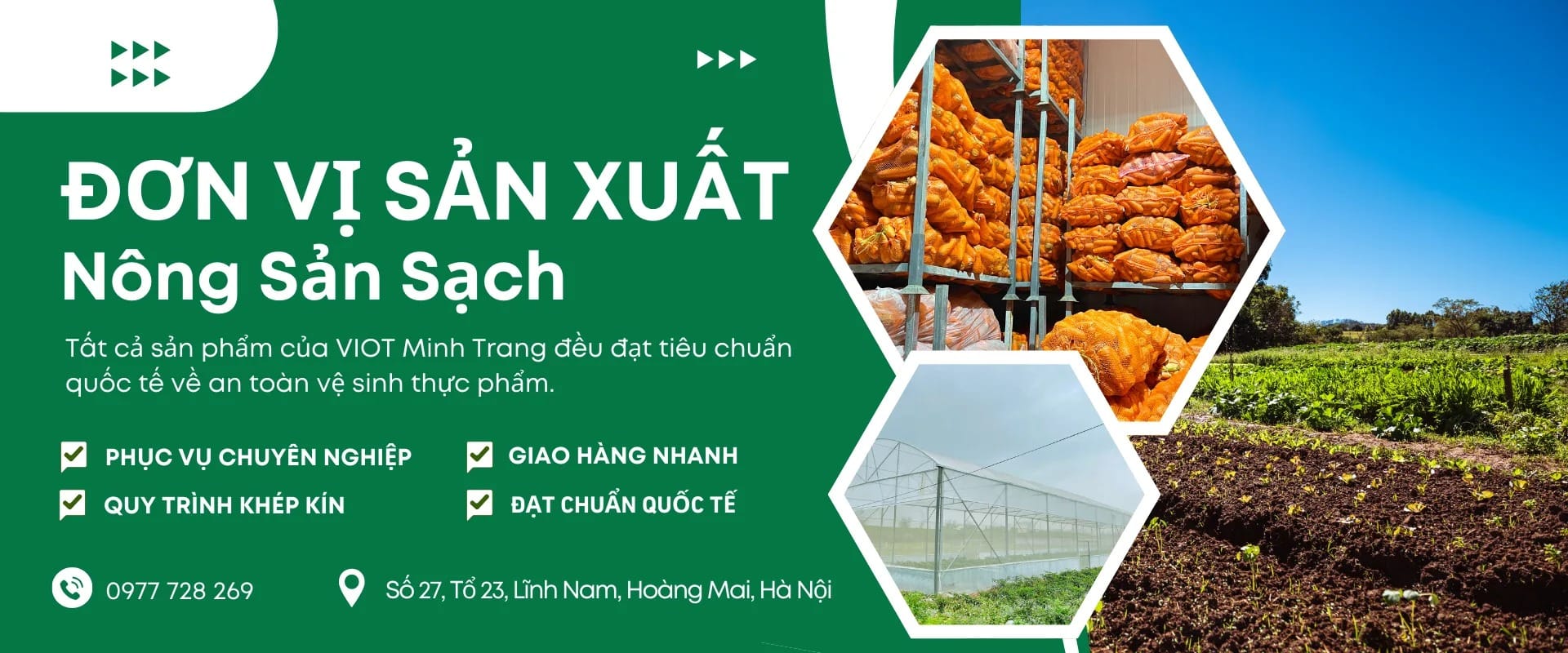
VIOT Vietnam – A Trusted Partner in Agricultural Export
Viot Minh Trang has the capacity to supply large volumes and a wide variety of products — including fresh, frozen, dried, ground, and OEM/ODM packaged goods — making us a reliable partner for Vietnamese businesses looking to expand globally.
Mastering agricultural export procedures is the key for Vietnamese enterprises to unlock market potential and succeed internationally. Professionalism in document preparation, customs processes, and compliance with industry regulations is crucial.
With the support of trusted partners like Viot Minh Trang, Vietnamese agricultural products will continue to strengthen their sustainable presence on the global map.





Tác giả Tưởng Mạnh Biên
Là chuyên gia giàu kinh nghiệm trong lĩnh vực xuất khẩu nông sản. Với nhiều năm làm việc, nghiên cứu và trực tiếp tham gia vào các hoạt động sản xuất, kinh doanh và xuất khẩu nông sản, tác giả chia sẻ những kiến thức chuyên môn sâu sắc cùng các bài học thực tiễn giá trị nhằm hỗ trợ doanh nghiệp.
- Địa chỉ: Số 27, Tổ 23, Lĩnh Nam, Hoàng Mai, Hà Nội
- Email: viotvietnam.vn@gmail.com
- SĐT: 0977 728 269